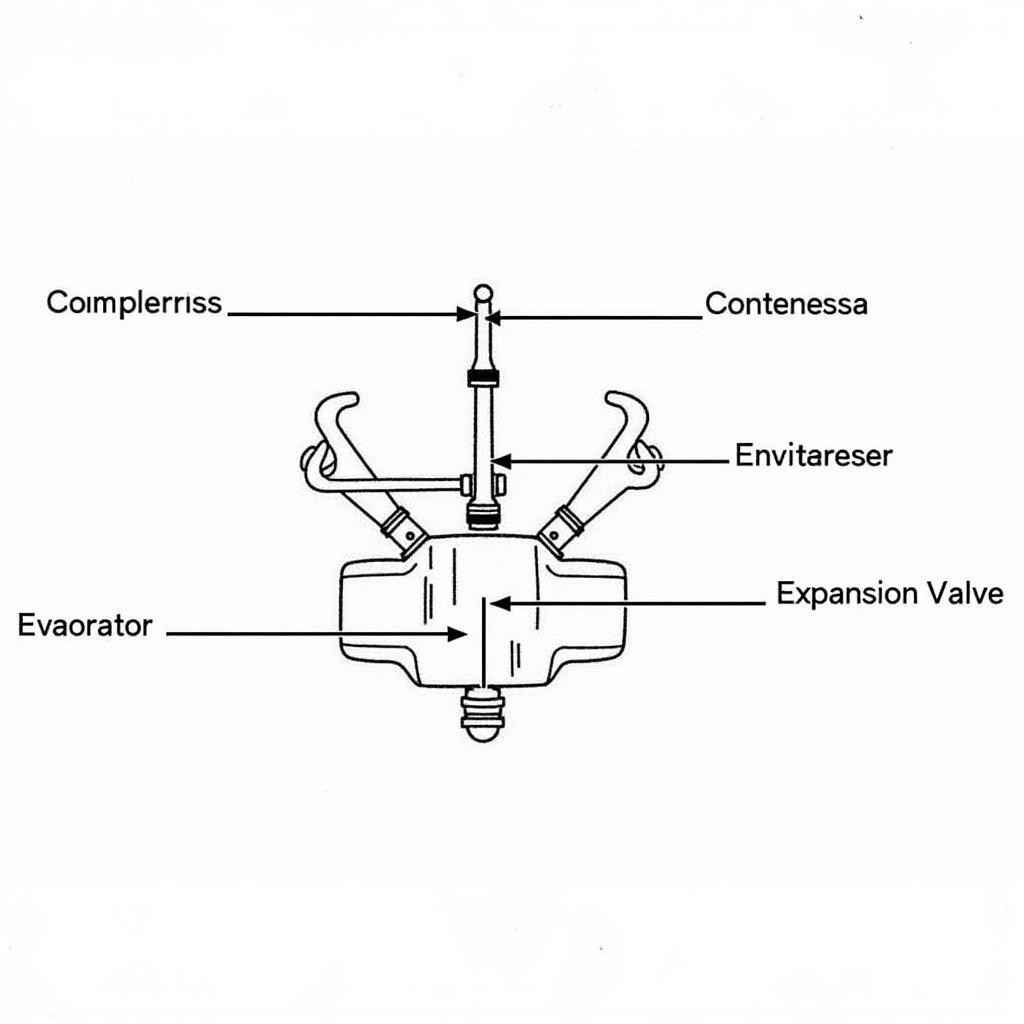Keeping your car’s AC in top shape is crucial for a comfortable driving experience, especially during scorching summers. Understanding and using Car Ac Diagnostic Tools is essential for both DIY enthusiasts and professional mechanics. Whether you’re a seasoned technician or a car owner eager to tackle AC issues head-on, this guide will equip you with the knowledge and strategies you need to effectively diagnose and troubleshoot car AC problems. After reading this article, you’ll be able to confidently use car ac diagnostic tools to pinpoint the root cause of your AC woes.
Choosing the right bluetooth auto car diagnostic interface scanner tools can save you time and money on repairs. From understanding basic AC principles to interpreting diagnostic codes, we’ll cover it all.
Understanding Your Car’s AC System
Before diving into the world of car ac diagnostic tools, it’s vital to grasp the fundamentals of how your car’s AC system operates. The system relies on a refrigerant, typically R-134a or the newer R-1234yf, to absorb heat from the cabin and release it outside. Key components include the compressor, condenser, evaporator, expansion valve, and various sensors and controls. A malfunction in any of these parts can lead to AC problems.
 Car AC System Components Diagram
Car AC System Components Diagram
Types of Car AC Diagnostic Tools
Several types of car ac diagnostic tools are available, each catering to different needs and skill levels. Manifold gauge sets are essential for measuring refrigerant pressure and identifying leaks. Electronic leak detectors can pinpoint even the smallest refrigerant leaks with precision. Thermometers help assess temperature differences across the system, while dedicated AC diagnostic scanners provide detailed insights into error codes and sensor readings. The streetwize accessories car diagnostic tool is a valuable asset for anyone working on car AC systems.
How to Use Car AC Diagnostic Tools
Using car ac diagnostic tools effectively requires a systematic approach. First, connect the appropriate tool, such as a manifold gauge set, to the AC system’s low and high-pressure ports. Observe the pressure readings and compare them to the manufacturer’s specifications. Significant deviations can indicate a problem with the compressor, refrigerant charge, or other components. Similarly, use a thermometer to measure the air temperature at the vents and compare it to the ambient temperature. A small temperature difference suggests a problem with the cooling capacity.
Interpreting Diagnostic Trouble Codes (DTCs)
Modern vehicles are equipped with onboard diagnostic systems (OBD-II) that store diagnostic trouble codes (DTCs) related to various systems, including the AC. Using an OBD-II scanner, specifically designed for car ac diagnostics, retrieve these codes and interpret their meaning. DTCs provide valuable clues about the nature of the problem, such as a faulty sensor, a malfunctioning actuator, or an electrical issue. Some advanced car diagnostic tools for mac allow for bi-directional communication, enabling you to control various components and test their functionality.
Common Car AC Problems and Solutions
Several common problems can plague a car’s AC system. Low refrigerant levels can lead to poor cooling performance. Leaks can occur in various parts of the system, requiring careful inspection and repair. A malfunctioning compressor can hinder the system’s ability to circulate refrigerant. Electrical issues, such as a faulty sensor or a blown fuse, can also disrupt AC operation. Identifying the root cause with car ac diagnostic tools is the first step towards an effective solution. The bmw 740 il obd diagnostic tool provides comprehensive diagnostics for specific vehicle models.
Maintaining Your Car’s AC System
Regular maintenance can prevent many AC problems and extend the life of your system. Periodically check the refrigerant level and recharge it if necessary. Inspect for leaks and address them promptly. Clean the condenser and evaporator coils to ensure optimal heat transfer. Replace the cabin air filter regularly to maintain good air quality. Using wireless diagnostics tool mac makes routine checks more convenient.
Conclusion
Mastering the use of car ac diagnostic tools empowers you to take control of your car’s AC system. Whether you’re a DIY enthusiast or a professional technician, having the right tools and knowledge can save you time, money, and frustration. By understanding how your AC system works, using diagnostic tools effectively, and interpreting diagnostic codes, you can confidently diagnose and fix AC issues. For any assistance or further information, feel free to contact us at ScanToolUS. Our phone number is +1 (641) 206-8880, and our office is located at 1615 S Laramie Ave, Cicero, IL 60804, USA. We are here to help you with all your car ac diagnostic tool needs.



Pingback: How to Use a BMW Diagnostic Tool: A Comprehensive Guide - Car Scan Tool